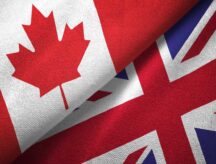Express Entry targeted occupations: How many healthcare workers does Canada need?
Healthcare occupations are one of the five categories of occupations chosen by Immigration, Refugees and Citizenship Canada (IRCC) to prioritize through Express Entry category-based draws in 2023.
Get a Free Express Entry Assessment
Express Entry category-based draws were announced earlier this year. The program’s goal is to select immigration candidates that have particular qualifications such as education and work experience that can support labour market needs in Canada.
IRCC chose five categories that are experiencing labour market gaps: healthcare, science, technology, engineering, and math (STEM), transport, trades and agriculture/agri-food. These occupations were chosen after IRCC gathered feedback and suggestions from a broad range of stakeholders and the public.
Category-based draws are similar to standard Express Entry draws. However, while standard Express Entry draws focus on a candidates Comprehensive Ranking System (CRS) score, category-based draws prioritize work experience in the chosen occupations.
Why healthcare was chosen as a targeted Express Entry category
Canada has been facing a chronic shortage of physicians and nurses that have caused detrimental effects on primary and emergency care.
To illustrate, in May of this year, Niagara Health said its urgent care centres in southern Ontario can no longer operate overnight as it faces physician staff shortages. A hospital in Minden, Ontario had to permanently close the local ER due to the staffing strain. Moreover, 180 ER doctors across Calgary wrote an open letter bringing to light the state of emergency care in the city.
Canada relies on immigration to fill job vacancies in the healthcare system. In the fourth quarter of 2022, there were 143,695 job vacancies in the Healthcare and Social Assistance category, a job vacancy rate of 6%. At the time, the sector had the highest job vacancy rate of all the category-based occupations.
Moreover, 36% of physicians and 25% of registered nurses in Canada were born outside of the country.
Foreign trained medical professionals can find it difficult to get proper licensing in Canada. Because of this, IRCC has taken measures to make it easier for foreign trained healthcare workers to immigrate to Canada. This has allowed physicians and other professionals to find work in their field and help with the labor shortages in the healthcare system.
How many healthcare workers does Canada need?
Employment and Social Development Canada (ESDC) provides a tool called the Canadian Occupational Projection System (COPS). COPS offers information on the occupational outlook for different professions and calculates the amount of job openings in a particular profession over the 2022 to 2031 period.
Some healthcare profession outlooks include:
- Registered nurses and psychiatric nurses: 155,400 new job openings
- Licensed practical nurses: 27,800 new job openings
- General practitioners and family physicians: 48,900 new job openings
- Specialist physicians: 29,800 new job openings
- Nursing coordinators and supervisors: 23,100 new job openings
- Optometrists, chiropractors, and other professional occupations in health diagnosing and treating: 17,900 new job openings
- Pharmacists: 16,100 new job openings
- Physiotherapists: 14,300 new job openings
These figures suggest that Canada will need to welcome hundreds of thousands of new skilled healthcare workers to fill upcoming job openings and labour needs in the next few years.
What opportunity does this present to prospective immigrants to Canada?
"Health professionals have been working around the clock to provide world-class care to individuals in communities across Canada, but it's no secret that our health system needs more workers to continue delivering the quality care that people in Canada deserve," said former Immigration Minister Sean Fraser when announcing category-based draws.
In addition, Fraser said that between 2017 and 2022, Canada welcomed around 21,000 health care workers - just over 4,000 workers a year. Fraser then said that IRCC plans to double that number, bringing in around 8,000 new healthcare workers a year.
On top of Express Entry’s category-based draws, several provinces have already held draws for healthcare professionals through targeted streams of the Provincial Nominee Program (PNP). For example, Alberta has a Designated Healthcare Pathway, under the Alberta Advantage Immigration Program.
Therefore, health care professionals who are interested in immigrating to Canada may be eligible to come through various immigration pathways. Since there is clearly a demand for healthcare workers, prospective candidates will be able to fill labour market gaps whilst also having important and fulfilling careers in Canada.
History of healthcare Express Entry draws to date
To date, IRCC has issued two rounds of invitations specifically for eligible Express Entry candidates with recent work experience in healthcare occupations.
The first healthcare category-based draw took place on June 28, 2023. This draw saw IRCC issue ITAs to 500 immigration candidates with work experience in healthcare. Candidates in this draw had to have a minimum CRS of 476 to be considered. Just eight days later, on July 6, 2023, IRCC conducted a second draw for healthcare workers, inviting 1,500 eligible immigration candidates (with a minimum CRS score of 463) to apply for permanent residence in Canada.
Note: Data obtained from IRCC by the Globe and Mail noted that category-based draws for those with experience working in healthcare occupations would add up to between "nine [and] 12 percent" of all ITAs issued under Express Entry for the rest of this calendar year.
Click here to view the results of every Express Entry draw conducted by IRCC. The hyperlinked page will be updated anytime a new draw occurs.
- Do you need Canadian immigration assistance? Contact the Contact Cohen Immigration Law firm by completing our form
- Send us your feedback or your non-legal assistance questions by emailing us at media@canadavisa.com





